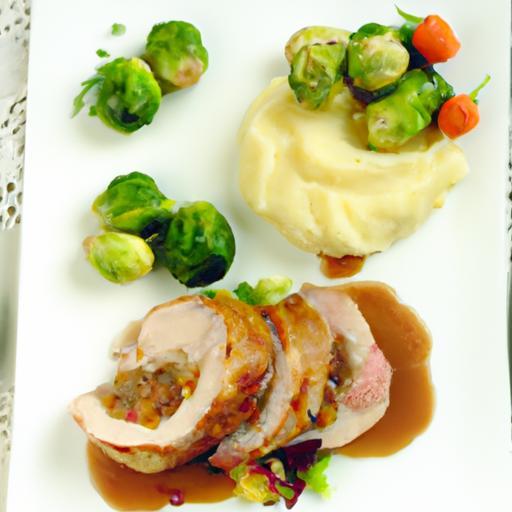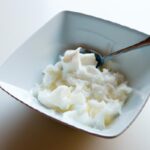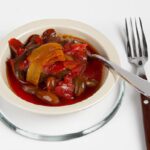In the bustling world of kitchens and cutting boards, the art of cooking is much more than following recipes-it’s a dynamic dance of flavors, textures, and aromas. “Crafting Culinary Gold: Experiment Your Way to Perfect Recipes” invites you on a flavorful journey where curiosity becomes your compass and creativity your essential ingredient. Here, the alchemy of the kitchen transforms humble staples into unforgettable dishes through trial, error, and inspired improvisation. Step beyond the recipe card and discover how playing with measurements, spices, and techniques can lead you to your own signature culinary masterpieces-because perfection in cooking isn’t a destination; it’s an adventurous process of experimentation.
Crafting Culinary Gold begins with understanding how each ingredient and technique works together to elevate your dishes into memorable experiences. Imagine a simple roasted chicken transforming into a feast that dances on the palate through vibrant layering of flavors, thoughtful ingredient swaps, and precise textures. This recipe embraces the artistry of ingredient mastery and culinary balance, inspiring you to wield substitutions and harmonize components for dishes that tell their own savory story.
Prep and Cook Time
Preparation: 20 minutes
Cooking: 1 hour 15 minutes
Total: 1 hour 35 minutes
Yield
Serves 6 hearty portions
Difficulty Level
Medium – ideal for those ready to experiment with flavor layers and texture balance
Ingredients
- 1 whole chicken (about 4 lbs), patted dry
- 2 tbsp olive oil (preferably extra virgin)
- 1 lemon, zested and quartered
- 4 garlic cloves, minced
- 2 tsp smoked paprika
- 1 tsp ground cumin
- 1 tbsp fresh thyme leaves, chopped
- Salt – 1½ tbsp coarse sea salt, divided
- Freshly ground black pepper – 1 tsp
- 1 small onion, quartered
- 1 cup low-sodium chicken broth
- Optional garnish: chopped fresh parsley and lemon wedges
- Ingredient substitution options:
- For olive oil: avocado or walnut oil to add unique nutty notes
- For smoked paprika: chipotle powder or sweet paprika for either smokiness or subtle sweetness
Instructions
- Preheat your oven to 425°F (220°C).
- Prepare the chicken skin by gently loosening it with your fingers to allow the herb and seasoning mixture to permeate beneath – this step boosts flavor absorption.
- Combine the olive oil, lemon zest, minced garlic, smoked paprika, cumin, thyme, 1 tbsp salt, and black pepper in a small bowl. Rub this mixture liberally all over the chicken and under the skin for a bold flavor infusion.
- Place the quartered lemon and onion inside the chicken cavity to add moisture and fragrant aromatics during roasting.
- Truss the chicken legs with kitchen twine to promote even cooking and maintain a beautiful shape.
- Transfer chicken to a roasting pan or oven-safe skillet.
- Roast the chicken for 15 minutes at high heat to crisp the skin, then reduce temperature to 350°F (175°C) and cook for another 45-55 minutes, basting occasionally with the pan juices to maintain juiciness.
- Check doneness by inserting a meat thermometer into the thickest part of the thigh; it should read 165°F (74°C).
- Remove chicken from the oven and let it rest for 15 minutes on a carving board. Resting allows juices to redistribute, ensuring moist and tender meat.
- Carve and serve, garnished with freshly chopped parsley and lemon wedges for a pop of color and brightness.
Tips for Success
- Unlock unique twists by substituting smoked paprika with a pinch of garam masala or za’atar to explore Middle Eastern flavor profiles.
- Keep the chicken skin dry before roasting for a beautifully crispy finish – pat it firmly with paper towels.
- Make-ahead magic: Marinate the chicken in the seasoning mixture overnight to deepen flavor complexity.
- If you prefer a spicier profile, add a dash of cayenne pepper or fresh chili flakes to the rub.
- For complementary textures, serve alongside a cooling cucumber-yogurt salad or crisp roasted root vegetables.
Serving Suggestions
Plate this roasted chicken with a side of vibrant quinoa salad tossed with cherry tomatoes and fresh herbs to contrast the warm, smoky flavors. Garnish with lemon wedges and a sprinkle of parsley to invigorate the plate visually and aromatically. Drizzle the pan sauce over the carved chicken for an irresistible, glossy finish. Pair with a crisp white wine or sparkling mineral water with lemon to refresh the palate.

| Nutritional Information (per serving) | Calories | Protein (g) | Carbs (g) | Fat (g) |
|---|---|---|---|---|
| Roasted Herbed Chicken | 380 | 45 | 2 | 18 |
For more insights on ingredient experimentation and precise recipe testing, explore our Advanced Culinary Techniques guide. For science-backed flavor compatibility, visit ScienceDaily’s Food Flavor Study.
Q&A
Q&A: Crafting Culinary Gold – Experiment Your Way to Perfect Recipes
Q1: What does “crafting culinary gold” really mean?
A1: Crafting culinary gold is the art of transforming ordinary ingredients into extraordinary dishes. It’s about elevating recipes through creativity, precision, and a touch of daring experimentation, turning everyday meals into unforgettable experiences.
Q2: Why is experimentation important in cooking?
A2: Experimentation is the secret sauce of innovation in the kitchen. It invites exploration, encourages breaking rules, and helps discover unique flavor combinations and techniques. Without experimentation, culinary creativity would be stuck in a loop of repetition.
Q3: How can beginners start experimenting with recipes?
A3: Start small. Swap one ingredient at a time, tweak cooking times, or play with seasoning levels. Keep notes on what works and what doesn’t. Remember, every “mistake” is a stepping stone to your perfect recipe.
Q4: What are some risks involved in experimenting with recipes, and how can they be managed?
A4: Risks include flavor clashes, texture mismatches, or overly complex dishes that lose their essence. To manage these risks, balance creativity with knowledge-understand basic flavor profiles and cooking principles. Use intuition but also rely on taste tests along the way.
Q5: Can following recipes strictly limit creativity?
A5: Absolutely-but recipes are also invaluable guides. Consider them as starting points rather than rules etched in stone. Use them to build confidence before venturing into your own culinary experiments, reinventing dishes based on your preferences.
Q6: How does one know when a recipe is “perfect”?
A6: Perfection in cooking is subjective and personal. A recipe is perfect when it excites your palate, satisfies nutritional needs, suits the occasion, and reflects your culinary voice. It’s the harmony between taste, texture, and presentation that resonates with you and your diners.
Q7: What role do tools and ingredients play in culinary experimentation?
A7: Tools and ingredients are your playground. Quality ingredients inspire flavor adventures, while versatile tools enable precise technique and creative presentation. Experimenting with new gadgets can open doors to textures and methods you never imagined.
Q8: How can chefs balance tradition and innovation?
A8: Embrace the roots of classic recipes while adding your twist-be it through ingredient substitutions, modern plating, or mixing culinary cultures. Innovate with respect, honoring tradition while invigorating dishes with fresh energy.
Q9: Can experimenting with recipes improve cooking skills?
A9: Undoubtedly. Experimentation sharpens your palate, hones intuition, and builds problem-solving skills. Each trial deepens your understanding of how ingredients interact and how heat and timing affect flavors and texture.
Q10: What’s the best mindset for experimenting in the kitchen?
A10: Cultivate curiosity, patience, and fearlessness. View the kitchen as a laboratory and yourself as an alchemist. Celebrate surprises, embrace failures, and constantly refine until your recipe gleams with culinary gold.
Key Takeaways
As you embark on your own culinary adventures, remember that each experiment in the kitchen is a step closer to your perfect recipe – a unique masterpiece crafted by your own hands and tastes. Embrace the unexpected flavors, the joyful tweaks, and even the occasional mishaps, for they are the alchemy that transforms simple ingredients into golden delights. In the grand tapestry of cooking, your creativity is the secret ingredient that turns every dish into a story worth savoring. So, don your apron, trust your instincts, and let the magic of culinary experimentation lead you to your next great creation. Happy cooking!


